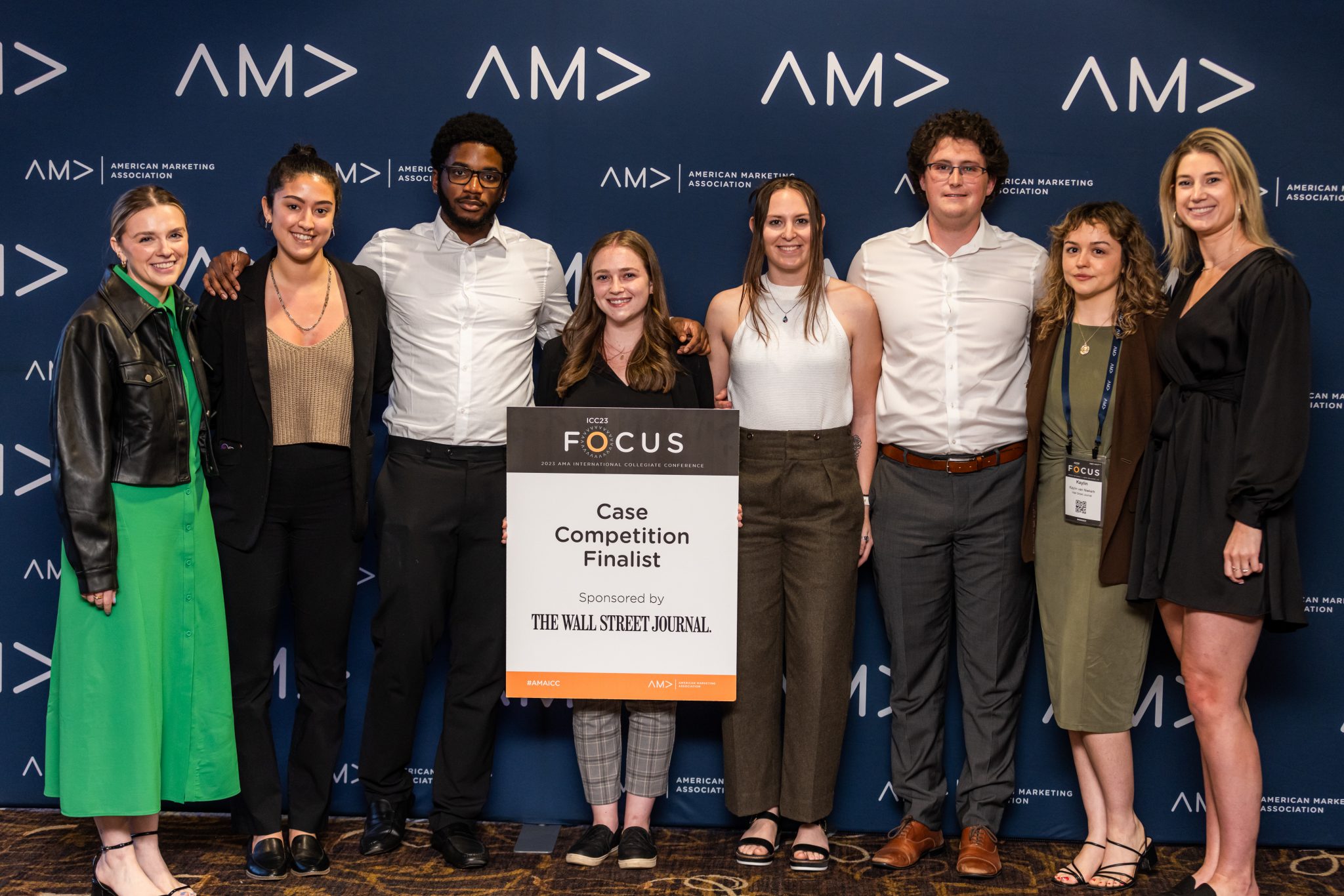A University of Maryland student team placed third out of 78 colleges last month in a college marketing competition sponsored by The Wall Street Journal.
The American Marketing Association Collegiate Case Competition, held in New Orleans, tasked students from colleges around the nation with developing a marketing strategy to solve a problem. This year, The Wall Street Journal sponsored the competition, and teams had to develop a strategy to better retain post-graduate students to the newspaper.
Sarah Cwerner, a senior communication and marketing major, was the president of the five-person team from this university, which developed the “Wall Street Journal pathway” — a plan that was the combination of redesigning the publication’s website and implementing a “design approach” marketing strategy that could better attract a younger audience.
“As a student, the first impression of the Wall Street Journal is that their site is not very attractive and easy to navigate to find exactly what you want,” Cwerner said. “So we came up with this initial idea of a library that could help organize the Wall Street Journal to be more consumer focused and personalized.”
[UMD GRAD Day features interdisciplinary student research]
Over the course of about four weeks, the team conducted primary and secondary research to understand the consumption habits and the subscription interests of the target audience, Cwerner said. She and her team made mock-ups of a revised website design, a rewards program and social media advertising strategies.
The judges were impressed by the visual and design components of the team’s presentation, Cwerner said.
Howard Bomstein, a professor at this university’s business school, coached the team and provided them with real-world knowledge of what certain clients may look for in their presentations.
“My job is simply to coach and help them prepare for the presentation, but it is their work, their thinking, their ideas,” Bomstein said.
The team came from this university’s strategic design fellowship program, which is part of the business school. Through the program’s capstone course, students compete in two case competitions per semester. The students on this team were randomly assigned at the beginning of the year.
“We had the first case competition for a different company, and our team actually didn’t win that one, so I feel like it kind of motivated us to excel in the second case competition,” Cwerner said.
Audrey Rapp, a senior management and marketing major, produced most of the project’s creative visual elements. As design director, Rapp created website and mobile app mockups and conducted user research.
[UMD student starts company to help small farmers find funding]
Rapp, who works as a freelance designer, said the strategic design fellowship prepared her to succeed in the case, and completely changed her perspective of what she wants to do.
“I’ve always had more of the creative mind,” Rapp said. “Within this project, I found I can tie both my graphic design background and my marketing background together.”
Mary Harms, a professor at this university’s business school, is the head of the program. She created it after noticing the number of students who had design capabilities but weren’t involved in business. Its capstone prepares students to take a realistic and strategic approach in case competitions, trying to give them confidence going into their careers, according to Harms.
Harms said each of the students on the third place team had a wide assortment of skills that all came together.
“They understand the interface of design and business so they can talk the talk, both as business people but also as creatives.” Harms said.



